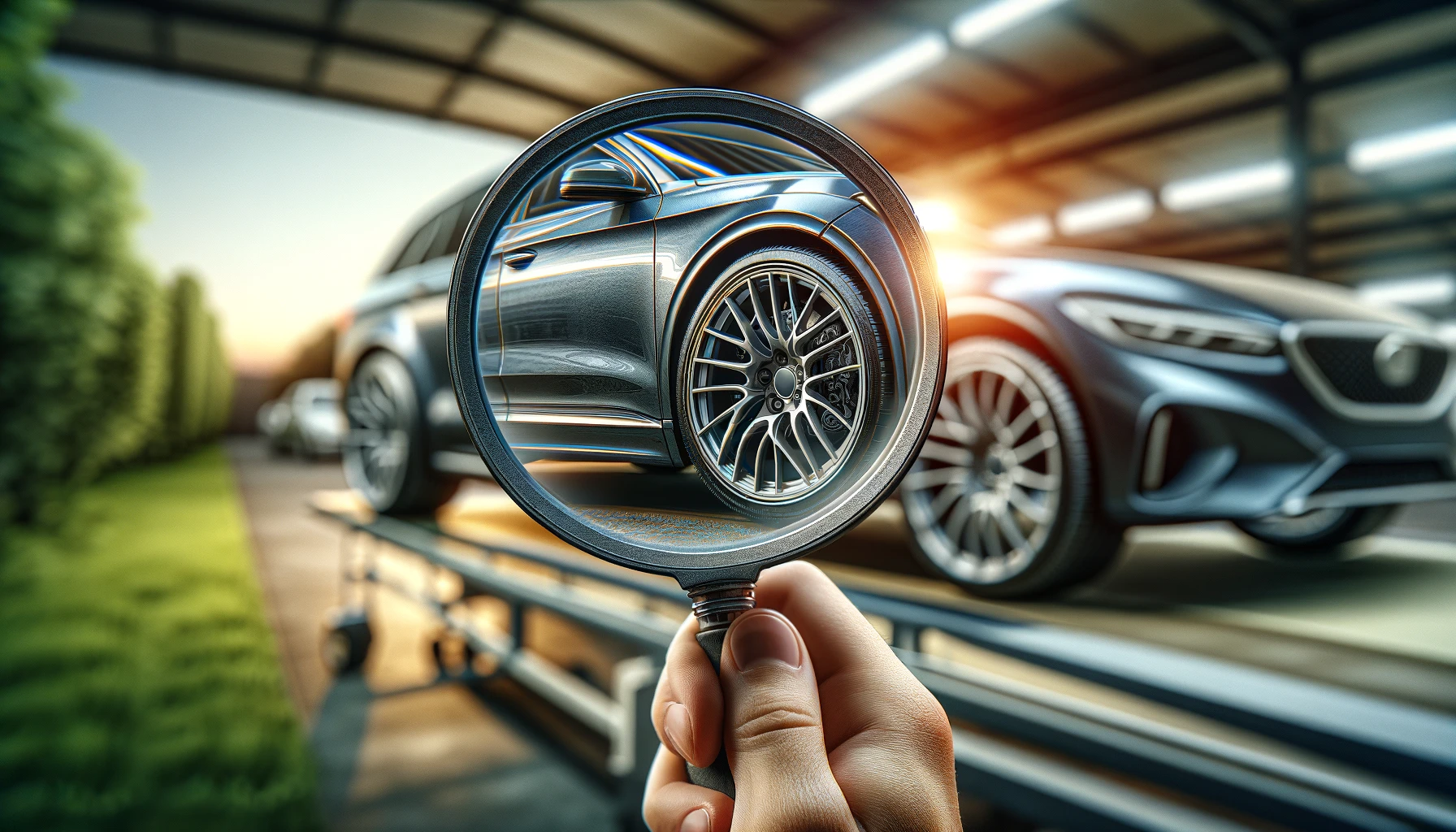Checklist: Leasing a Used Car

Leasing a used car is the most affordable way to get private, flexible mobility. Although used cars nowadays are much more reliable than the second hand cars of yesteryear, it is still important that you test drive the car and give it a thorough look before deciding to proceed.
In this article, we dive deep into the key aspects you should consider before leasing a used car. From checking the service history and warranty to assessing the mechanical condition and the history of previous owners – we cover all the essential points that will help you make an informed decision and avoid any disappointments or nasty surprises.
With a focus on transparency, simplicity, and customer satisfaction, we guide you through the process, ensuring you are equipped with the necessary knowledge to find the best leasing deal.
What you should look out for
- Is the service history complete?
- Check for a digital or physical service book
- Ensure all services have been performed to avoid warranty issues
2. Is the warranty still active?
- Verify the warranty status
- Check if any conditions of the car void the warranty
3. Who was the previous owner?
- Investigate the car's ownership history
- What was its previous use?
4. When was the last mandatory vehicle inspection (MFK)?
- Check the date of the last MFK
- Upcoming MFKs can be costly
5. Mechanical Condition: How does the car drive?
- Test drive for any pulling to the left or right, and braking performance
- Listen for unusual noises and strange smells
- Check dashboard for any warning lights
6. What is the condition of the tires?
- Inspect tire tread and wear
- Check for uneven wear between the sides indicating steering issues
7. What is the condition of the engine bay?
- Look for signs of tampering or oil leaks
- Check for non-original parts
8. What is the condition of the brakes?
- Examine brake pad thickness
- Test the handbrake
9. Exterior: Are there any signs of rust or damage?
- Inspect for dents, scratches, and rust
- Pay special attention to the bottom of doors and undercarriage
10. Is the car complete with all parts?
- Check for missing items like the antenna or hubcaps
- Ensure the interior is complete
- Check for aftermarket rims, exhaust, or other modifications
12. Interior: How does the interior smell or is it dirty?
- Note the first impression upon entering
- Be wary of signs of smoking or other strong odors
- Check cleanliness, also of headliner
Discover our Used Car Leasing Deals
Documentation and History
Check for a digital or physical service book
- In today's automotive world, service histories are often kept in digital formats, accessible through a dealership or manufacturer's database. Some vehicles still come with a physical service book. There should in any case be some kind of physical proof of whether services have been done, whether this is an elaborate booklet or simply a piece of paper with stamps on it.- Vergewissere dich, dass alle Wartungsarbeiten durchgeführt wurden, um Garantieprobleme zu vermeiden
- Regular maintenance is key to keeping a car reliable and ensuring that any manufacturer's warranty remains valid - manufacturer warranties are always linked to proper and regular servicing. Missing service records can be a red flag, indicating potential problems down the line.
Is the warranty still active?
Verify the warranty status
- In Switzerland, every new car that has been imported from the EU area needs to at least have two years of warranty. Check when the car was first registered and whether there is still warranty available. Most second-hand cars come only with a very short warranty when the original warranty has already expired.
- You should inquire about the warranty's expiration date, either by mileage or age of the car, to understand the extent of coverage that remains.
Check if any conditions of the car void the warranty
- Regular servicing is always a pre-condition to warranties remaining active. Modifications to the vehicle, improper maintenance, or using it in a manner not intended by the manufacturer (such as racing) can all also jeopardize the warranty coverage.
Who was the previous owner?
Investigate the car's ownership history
- Understanding who the previous owners were can indicate what condition it is in. Was it somebody who is likely to have driven calmly, or more aggressively?
What was its previous use?
- If the car was used as a delivery vehicle, such as pizza delivery, it could indicate a lot of strain on the clutch and gearbox. If it used to be a rental car, it is also more likely it was treated more ruthlessly by the people who rented it. Hence, there will have been more wear and tear.
When was the last mandatory vehicle inspection (MFK)?
Check the date of the last MFK
- In Switzerland, new cars need to go through official inspection/MFK the first time four years after registration. After that, the MFK is due every two years.
- If the car has recently gone through MFK, it will more likely be mechanically sound. Also, MFKs are not cheap, and if the car is scheduled to need an inspection soon, it will add costs.
Mechanical Condition: How does the car drive?
Test drive it
- Make sure the car steers straight by itself and does not pull to the left or right.
Listen for noises
- Also listen to the car - are there any odd noises? Can you hear grinding, squealing, or popping from the engine, exhaust, or gearbox? Or can you hear clicking and thumping from the suspension? Do the brakes still work well? And finally: Are there any odd smells that develop after a while of driving?
Check dashboard for any warning lights
- A clear dashboard is a good sign, but any illuminated warning lights should be taken seriously.
What is the condition of the tires?
Inspect tire tread and wear
- Make sure there is still enough tread on the tyres to both be legal and last you a good amount of time. The legal minimum for tread in Switzerland is 1.6mm, but you should ensure there are still at least 3-4mm left, especially on winter tyres.
Check for uneven wear
- If there is more wear on the sides of the tyre, or there is uneven wear between the left and right tyres, it might indicate issues with the steering system.
What is the condition of the engine bay?
- Look for signs of tampering or oil leaks. Make sure that the engine bay looks clean and there are no visual signs of spilled oil or other fluids. Also take a look whether there are crude repair jobs done with sticky tape.
Check for non-original parts
- Anything that looks flashy or does not visually match the rest of the parts in terms of design might have been installed after the fact. Be weary of these kinds of installations, as they might either not be legal or may have been installed by an amateur.
What is the condition of the brakes?
Examine brake pad thickness
- To check this, simply stick your finger on the pads and check that there is still enough material on the pads. There should be at least 6.4mm left. The more the better.
Test the handbrake (if there is a physical handbrake)
- DO NOT PULL THIS WHILE DRIVING FULL SPEED. But when going very slow, pull it to see if it still works. The cable that works the handbrake can be worn, hence influencing the handbrakes performance.
Exterior and Interior Condition
Exterior: Are there any signs of rust or damage?
Inspect for dents, scratches, and rust
Take a close look around the entire car and note any dent, scatch, or rust. Make sure the paint is homogenous everywhere - if there are spots that look like they have different paint, it might indicate a shoddy repair job. Also check existing scratches for rust, as scratching away the paint also scratches away the protective films of the metal.
Pay special attention to the bottom of doors and undercarriage
These places are often overlooked. The previous owner might have nicked the bottom of the door on a pavement and rust can develop from there.
Is the car complete with all parts?
Check for missing items like the antenna or hubcaps
- Sometimes, this might not be immediately apparent. Make sure the antenna is there, and all other parts. If there are inconsistencies, ask the person selling the car if something is missing. Also ensure the interior is complete - make sure all elements such as radio, buttons, and other systems are where they are supposed to be.
Are all parts original?
Check for aftermarket rims, exhaust, or other modifications
- The issue with aftermarket parts is that they need to be tested and registered to the car by the local council in Switzerland. Some people may install parts without the cantonal approval, potentially making you susceptible to getting a fine once the police finds out. Furthermore, especially mechanical aftermarket parts, might have been installed by an amateur or non-professional, which could lead to reliability issues in the future.
Interior: How does the interior smell or is it dirty?
Note the first impression upon entering
- Does the car smell clean or a bit funky? Or is there an over the top smell of cleaning product? Our noses get used to smells very quickly, so pay attention to your first impression. Be especially wary of signs of smoking or other strong odors.
Check cleanliness, also of headliner
- Make sure that everything is actually clean. Also check under the seats, on the back seats, and even the headliner. You wouldn’t believe how many people treat their car terribly inside.
Remember, the key to a successful used car lease lies in thorough research and due diligence. From verifying the service history and warranty status to conducting a detailed inspection of the car's mechanical condition and understanding its history, every step is crucial. By focusing on transparency, simplicity, and customer satisfaction, you can avoid common pitfalls and secure a deal that meets your needs.
In conclusion, leasing a used car can be a smart choice for many, offering the chance to enjoy the benefits of driving a quality vehicle with less financial burden. Whether you're drawn to the allure of a sleek sedan, the practicality of a family SUV, or the efficiency of a compact car, Gowago has offers for every taste!


